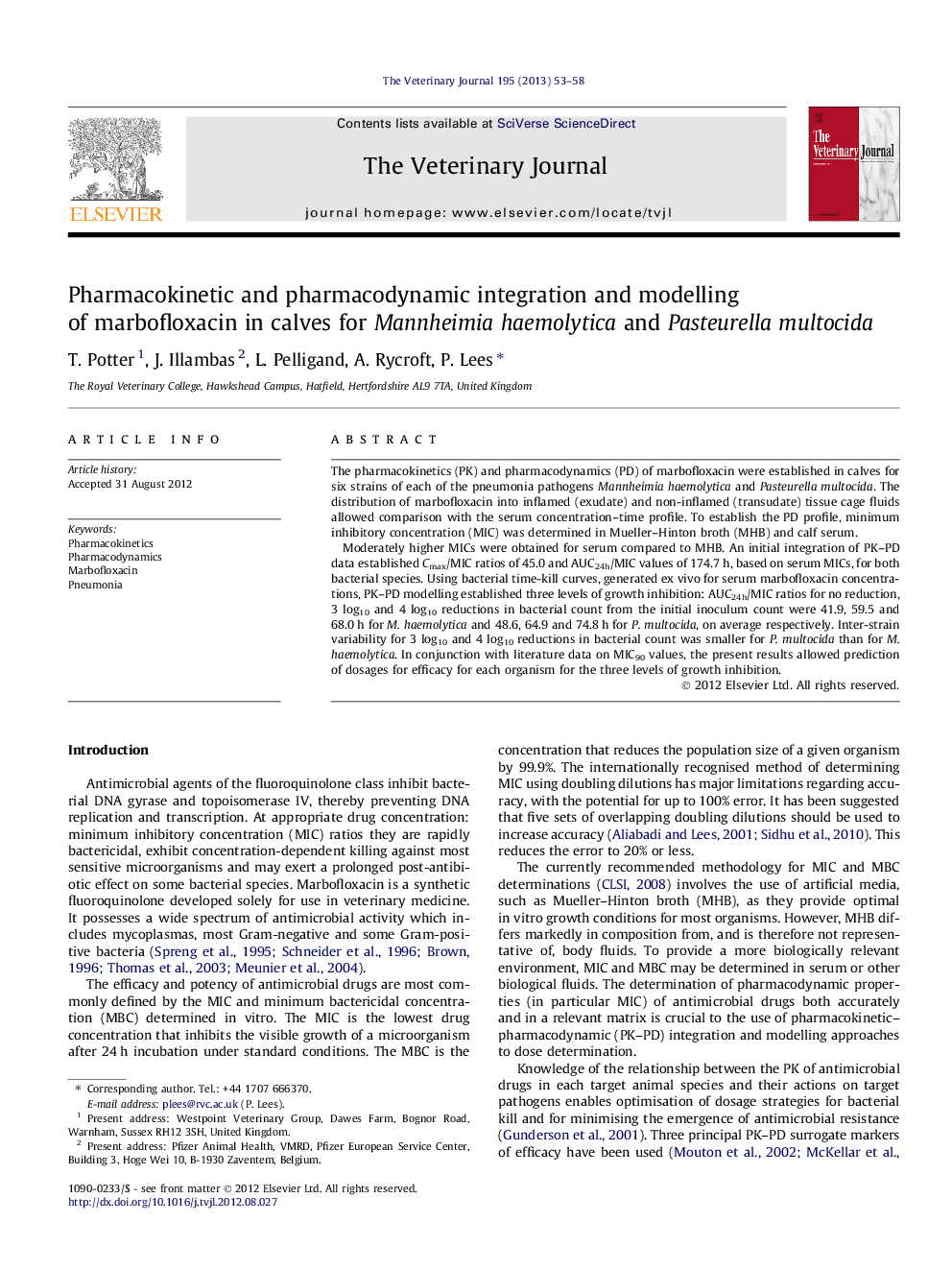| Article ID | Journal | Published Year | Pages | File Type |
|---|---|---|---|---|
| 2464190 | The Veterinary Journal | 2013 | 6 Pages |
The pharmacokinetics (PK) and pharmacodynamics (PD) of marbofloxacin were established in calves for six strains of each of the pneumonia pathogens Mannheimia haemolytica and Pasteurella multocida. The distribution of marbofloxacin into inflamed (exudate) and non-inflamed (transudate) tissue cage fluids allowed comparison with the serum concentration–time profile. To establish the PD profile, minimum inhibitory concentration (MIC) was determined in Mueller–Hinton broth (MHB) and calf serum.Moderately higher MICs were obtained for serum compared to MHB. An initial integration of PK–PD data established Cmax/MIC ratios of 45.0 and AUC24h/MIC values of 174.7 h, based on serum MICs, for both bacterial species. Using bacterial time-kill curves, generated ex vivo for serum marbofloxacin concentrations, PK–PD modelling established three levels of growth inhibition: AUC24h/MIC ratios for no reduction, 3 log10 and 4 log10 reductions in bacterial count from the initial inoculum count were 41.9, 59.5 and 68.0 h for M. haemolytica and 48.6, 64.9 and 74.8 h for P. multocida, on average respectively. Inter-strain variability for 3 log10 and 4 log10 reductions in bacterial count was smaller for P. multocida than for M. haemolytica. In conjunction with literature data on MIC90 values, the present results allowed prediction of dosages for efficacy for each organism for the three levels of growth inhibition.
